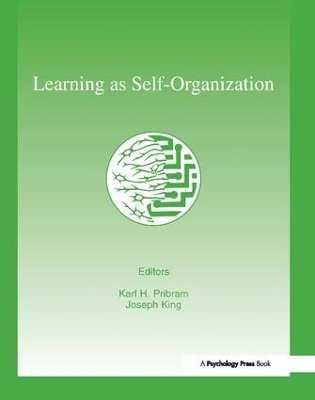
Learning As Self-organization
Psychology Press Ltd (Verlag)
978-1-138-41181-4 (ISBN)
Karl H. Pribram, Joseph S. King
Contents: K.H. Pribram, Foreword. K. Lorenz, Keynote: Innate Bases of Learning. Part I:The Behavioral Level: Learning. D.M. Rumbaugh, Respondents, Operants, and Emergents. W.J. McIlvane, Analysis of Behavioral Selection by Consequences and Its Potential: Contributions to Understanding Brain-Behavior Relations. P.R. Killeen, Mechanics of the Animate. P.R. Killeen, L.A. Bizo, The Response Dimension. M. Stadler, Nonlinear Phenomena in Learning Processes. L. Greeley, The Attractor of the Intentional Learning System. Part II:The Network Level: Self-Organization. S.C. Kak, The Three Languages of the Brain: Quantum, Reorganizational, and Associative. T. Kohonen, Automatic Formation of Wavelet- and Gabor-Type Filters in an Adaptive-Subspace SOM. D. Stassinopoulos, P. Bak, Democratic Reinforcement: Learning via Self-Organization. D.L. Alkon, K.T. Blackwell, G.S. Barbour, S.A. Werness, T.P. Vogl, Biological Plausibility of Synaptic Associative Memory Models. P.J. Werbos, Learning in the Brain: An Engineering Interpretation. Part III:The Neural Systems Level: Process. J.W. Brown, Morphogenesis and Mental Process. H.W. Hanlon, Topographically Different Regional Networks Impose Structural Limitations on Both Sexes in Early Postnatal Development. D.L. Schacter, E. Reiman, A. Uecker, M.R. Polster, L.S. Yun, L.A. Cooper, Brain Regions Associated With Retrieval of Structurally Coherent Visual Information. D.L. Schacter, N.M. Alpert, C.R. Savage, S.L. Rauch, M.S. Albert, Conscious Recollection and the Human Hippocampal Formation: Evidence from Positron Emmission Tomography. R.P. Kesner, An Exploration of the Neural Bases of Memory Representations of Reward and Context. D.D. de Grandpre, D.M. Tucker, Emotion and the Self-Organization of Semantic Memory. Part IV:The Social Level: The Organization of Self in Society. W.J. Freeman, Learning and Unlearning in the Formation of Social Bonds. A. Gregory, Language as an Instrument for Self Reorganization. R.T. Bradley, K.H. Pribram, Self-Organization and the Social Collective. Part V:The Transcendental Level: Self-Organization on a Grand Scale. S.C. Kak, Reflections in Clouded Mirrors: Selfhood in Animals and Machines. H.P. Stapp, Chance, Choice, and Consciousness: A Causal Quantum Theory of the Mind/Brain. B.J. Hiley, Mind and Matter: Aspects of the Implicate Order Described Through Algebra. J.S. King, K.H. Pribram, Afterword.
| Erscheinungsdatum | 07.10.2017 |
|---|---|
| Reihe/Serie | INNS Series of Texts, Monographs, and Proceedings Series |
| Verlagsort | Hove |
| Sprache | englisch |
| Maße | 210 x 280 mm |
| Gewicht | 453 g |
| Themenwelt | Geisteswissenschaften ► Psychologie ► Allgemeine Psychologie |
| Geisteswissenschaften ► Psychologie ► Verhaltenstherapie | |
| ISBN-10 | 1-138-41181-7 / 1138411817 |
| ISBN-13 | 978-1-138-41181-4 / 9781138411814 |
| Zustand | Neuware |
| Informationen gemäß Produktsicherheitsverordnung (GPSR) | |
| Haben Sie eine Frage zum Produkt? |
aus dem Bereich


